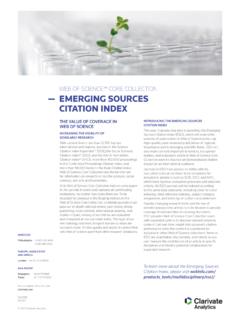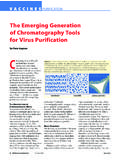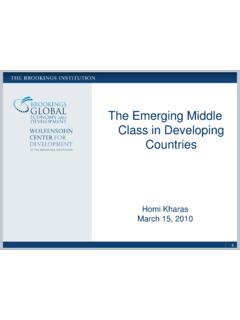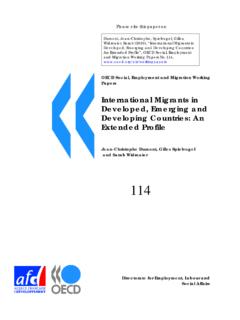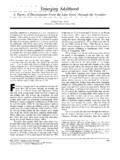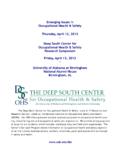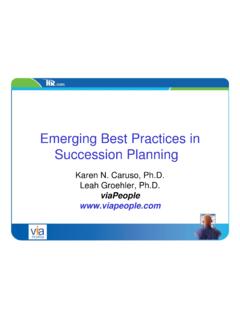Transcription of Designing and implementing livestock value chain …
1 ISSN 1810-0708. 10. FAO ANIMAL PRODUCTION AND HEALTH. guidelines Designing AND implementing . livestock value chain studies . A practical aid for Highly Pathogenic and emerging Disease (HPED) control Cover photographs: Left and center: FAO/Jan Hinrichs Right: FAO/Yves Froehlich 10. FAO ANIMAL PRODUCTION AND HEALTH. guidelines Designing AND implementing . livestock value chain studies . A practical aid for Highly Pathogenic and emerging Disease (HPED) control FOOD AND AGRICULTURE ORGANIZATION OF THE UNITED NATIONS. Rome, 2012. Recommended citation FAO. 2012. Designing and implementing livestock value chain studies A practical aid for Highly Pathogenic and emerging Disease (HPED) control. FAO Animal Production and Health Guidelines No. 10.
2 Rome. The designations employed and the presentation of material in this information product do not imply the expression of any opinion whatsoever on the part of the Food and Agriculture Organization of the United Nations (FAO) concerning the legal or development status of any country, territory, city or area or of its authorities, or concerning the delimitation of its frontiers or boundaries. The mention of speci c companies or products of manufacturers, whether or not these have been patented, does not imply that these have been endorsed or recommended by FAO in preference to others of a similar nature that are not mentioned. The views expressed in this information product are those of the author(s) and do not necessarily re ect the views of FAO.
3 ISBN ISBN 978-92-5-107139-7. All rights reserved. FAO encourages reproduction and dissemination of material in this information product. Non-commercial uses will be authorized free of charge, upon request. Reproduction for resale or other commercial purposes, including educational purposes, may incur fees. Applications for permission to reproduce or disseminate FAO copyright materials, and all queries concerning rights and licences, should be addressed by e-mail to or to the Chief, Publishing Policy and Support Branch, Of ce of Knowledge Exchange, Research and Extension, FAO, Viale delle Terme di Caracalla, 00153 Rome, Italy. FAO 2012. iii Contents Acknowledgements v Purpose of the document 1. Overview: context of value chain studies 3.
4 How value chain studies fit within the wider context of Designing disease surveillance and control strategies 3. Definition of value chain and value chain study 4. value chains 4. value chain studies 4. An overview of the practical approach 6. Designing and implementing value chain studies 9. Decide objective and outputs 9. Outputs required from value chain studies 10. Recommended data collection and storage methods 11. Information to be collected 12. Potential data sources 14. Choosing the right data collection tool 15. Overview of data analysis and modelling techniques used with an assessment of their strength and weaknesses 23. Choosing the right analysis tool / framework 23. Summary 27. Some examples of successful application of tools described in this document 29.
5 Demand driven risk reduction economic perspective in risk reduction approaches along the value chain 29. Application of the methodology 29. Discussion and conclusions 30. The value of the network analysis approach Identifying control points linked with risk data 31. Application of the methodology 31. Results 32. Conclusions 32. Integrating participatory and conventional data collection tools for understanding local chicken market chains 33. Application of the methodology and results 33. Discussion 34. iv Cross border mapping with inclusion of cross-border price differentials 34. value chain mapping and subsequent risk assessment of cross-border chicken trade between Northern Vietnam and China 35. Background 35. Methodology 36. Findings 36.
6 The use of cross-border mapping and local interviewing of stakeholders to understand the unofficial cattle trade across South East Asia 37. Context 37. Application of the methodology 37. Results 38. Perspectives 38. Final words 41. Flexibility 41. Data sharing 42. ANNEX 1. Glossary of technical and related terms in value chain and Risk Analysis 43. v Acknowledgements The main authors of this document are Nick Taylor1 and Jan Hinrichs2. The authors would like to acknowledge the support of the FAO RAP staff in Bangkok who worked hard to successfully implement the workshop from which this document is a direct result. Most importantly the authors acknowledge the hard work of all the partici- pants in the workshop. They all contributed their experience to this document and provided useful additional comments during the final drafting.
7 Likewise, the authors also acknowledge the European Union (EU) for providing full financial support to the development of this publication. Several of the workshop participants made particular contributions in the chapter "Some examples of successful application of tools described in this document". These people are named within the headings of the sections they contributed. 1 Veterinary Epidemiologist. Veterinary Epidemiology and Economics Research Unit (VEERU) & PAN livestock Services Ltd., University of Reading, School of Agriculture, Policy and Development, Earley Gate, PO. Box 237, Reading RG6 6AR, UK. E-Mail: 2 Animal Health Economist. FAO Regional Office for Asia and the Pacific (FAO-RAP), 39 Phra Atit Road, Bangkok 10200,Thailand.
8 E-Mail: 1. Purpose of the document Several production system and market chain studies have been conducted to support dis- ease control interventions in South East Asia. These value chain studies have been very use- ful to enhance understanding about the production system dynamics, product flows and the disease transmission impact of different actors' incentive structures and behaviours. However, it is felt that more explicit integration of the value chain approach into epide- miologic risk assessments would be beneficial to support animal health decision makers in identifying efficient and equitable disease control interventions. Some of the early, exploratory field applications of value chain approaches to under- standing disease epidemiology and risk assessment, with a focus on H5N1 HPAI, were used as a basis for the development of a FAO guidelines document (FAO, 20113 hereafter referred to as the FAO guidelines document ).
9 The FAO guidelines document provides technical foundations of the value chain approach to management of disease risk and describes a practical approach for the incorporation of risk analysis with descriptive value chain mapping. Suggestions of field techniques are included. This document is based on a consultative workshop on The integration of livestock market chain analysis in the control of HPEDs in South and South East Asia , held from 26 to 27 April 2011 in Bangkok, Thailand (for convenience this will be referred to as the Bangkok workshop ). Based on the collective experience of the participants in the work- shop, this document sets out to prioritise the set of required data to be collected and to identify effective data collection and analysis techniques.
10 After a brief overview to set the context of value chain studies in animal health decision support, the main body of the document consists of: t A chapter covering the practical aspects of value chain study design, implementation and analysis. This chapter presents an overview of available data collection and ana- lytical tools (a toolbox') with discussion of the appropriate use of the tools. t A chapter describing some current regional experiences with value chain study approaches, containing brief examples of the successful application of different tools. It is intended that as an adjunct to the FAO guidelines document this document will provide further practical advice that will encourage more effective use of value chain stud- ies in South and South East Asia as part of animal health decision support.










